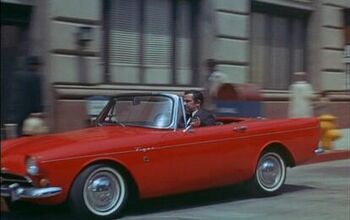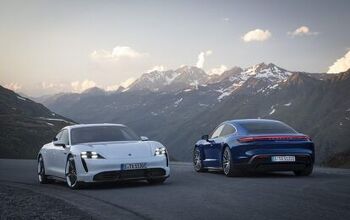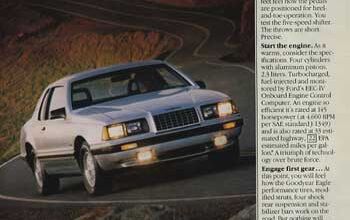QOTD: The One You Passed Over?

Last night, as I drove to the spot where I run in the woods like a creepy person with something to hide, a silver Chevy Spark drove past. The owner of this sub-subcompact model, which has so far managed to avoid Mary Barra’s axe, had outfitted his pint-sized ride with fairly presentable aftermarket wheels. You know the ones: black spokes, chrome outer rim. Not obnoxiously oversized, either.
This driver was motoring with precision and purpose, making good use of his 98 horses. It got me thinking. Clearly, this was all the car the driver could afford (base Canadian MSRP: $9,995 before destination), but he wanted to make it special. Just a little bit better. He wanted to put a personal stamp on his econobox; make it something he could be proud of.
And you know what? That’s great. It made me a little nostalgic of my first car purchase, but it also got me me thinking about the car that didn’t make the cut.
Often, when buying your very first car, the slate of candidates dwindles down to just two entries, each teetering on either ends of the scale. Different pros and cons. Differing outputs, content, and perhaps purpose. With exceedingly sparse checking accounts bankrolling this purchase, only one candidate makes it home to the parents’ driveway.
In my case, I’ve sometimes wondered how my social life (and bank balance) would have fared had I gone with that other car. It wasn’t sexy, but it was cheap. And, unlike the half-rotten four-cylinder Mustangs prowling used car lots back in the day, it wasn’t penalized by overzealous insurers. The car wasn’t dissimilar from the choice I went with. Both were two-door hatchbacks, each with a four-cylinder engine and a five-speed manual. Both were anywhere but high on the automotive social ladder.
The car I passed over for a lemon in waiting was a Suzuki Swift GT from the glorious year of 1991, if memory serves me correctly. Boasting a second camshaft the Plymouth lacked and seven more horsepower, the 1.3-liter hatchback would probably have been a cheap, fuel-sipping, featherweight box that could have offered up a grin every now and then. Possibly. The thing is, Geo Metros were still a common sight at the time, and the Swift’s genetic connection to that piece of rolling abstinence earned it a second-place finish in this buyer’s race.
You’re probably well aware of the misery that awaited this writer in his gremlin-steeped Plymouth. At least it looked like it had a trunk.
Think back to your early years. What was your No. 2 choice when you parted with those first car-buying bucks? Do you regret not springing for it?
[Images: Ford, Murilee Martin/TTAC]

More by Steph Willems
Latest Car Reviews
Read moreLatest Product Reviews
Read moreRecent Comments
- SCE to AUX Range only matters if you need more of it - just like towing capacity in trucks.I have a short-range EV and still manage to put 1000 miles/month on it, because the car is perfectly suited to my use case.There is no such thing as one-size-fits all with vehicles.
- Doug brockman There will be many many people living in apartments without dedicated charging facilities in future who will need personal vehicles to get to work and school and for whom mass transit will be an annoying inconvenience
- Jeff Self driving cars are not ready for prime time.
- Lichtronamo Watch as the non-us based automakers shift more production to Mexico in the future.
- 28-Cars-Later " Electrek recently dug around in Tesla’s online parts catalog and found that the windshield costs a whopping $1,900 to replace.To be fair, that’s around what a Mercedes S-Class or Rivian windshield costs, but the Tesla’s glass is unique because of its shape. It’s also worth noting that most insurance plans have glass replacement options that can make the repair a low- or zero-cost issue. "Now I understand why my insurance is so high despite no claims for years and about 7,500 annual miles between three cars.



































Comments
Join the conversation
Mine was not so much the "one that got away", but the "one I got". I'll let you judge how it all went down. The year was 1985. I was in my final semester of college, and I totaled my '79 Pontiac Sunbird. I got $2000 from the insurance company. What to do? I found a new car that ticked all my boxes. Economical, practical, new car warranty. I negotiated a deal for the $2000 up front and $150/mo, with the first payment deferred 90 days so I would hopefully have a steady income after graduation. Ran the plan past my folks, and they shot it down, as I didn't yet have a job lined up. They suggested I pick up something cheap with the insurance money, then if/when I got work, I could get a new or newer car at that point. I followed their advice, ended up moving back to my hometown with a new job, and bought a year old car with 17,000 miles on it. The "one that got away"? New Ford Escort Diesel The "one I got"? Year old Honda Accord LX I think I dodged a bullet with that one.
First car was a Renault Clio (successor to LeCar) that my uncle found ridiculously cheap. Lasted 6 months before stalling and getting rear ended by a 5 series. Second car then had to happen. I looked at a Peugeot 405 diesel but was unused to the diesel characteristics and thought it idled rough. Passed it over for a Ford Orion that was a complete lemon that I ended up scrapping. I then replaced that horrible Ford with a Citroen that had the same engine as the Peugeot I should've bought, it was reliable and economical (50+mpg) and lasted me for years, from my student days through my 1st and 2nd full time jobs.